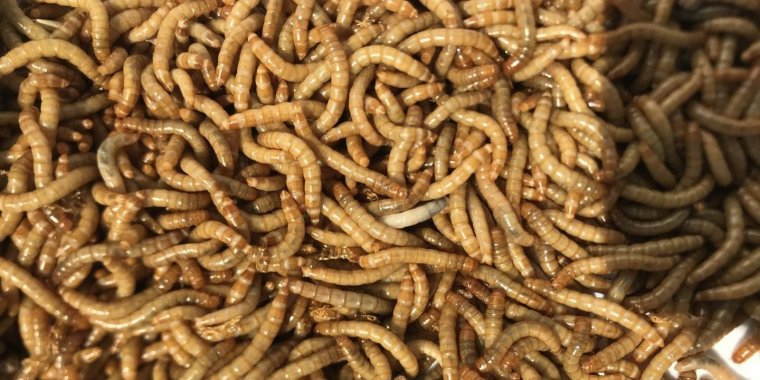| News / Science News |
Study finds that insect shows promise as a sustainable protein source
With global food demands rising at an alarming rate, a study led by scientists at Indiana University—Purdue University Indianapolis has found new evidence that a previously overlooked insect, the yellow mealworm, shows promise as an alternative protein source.

The yellow mealworm Tenebrio molitor. Scientists found the insect could serve as a protein source. Photo: Ti Eriksson, Beta Hatch
The research is based on a new analysis of the genome of the mealworm species Tenebrio molitor, led by Christine Picard of IUPUI. "Human populations are continuing to increase, and the stress on protein production is increasing at an unsustainable rate," said Picard.
Picard and her team sequenced the yellow mealworm's genome. The results will help those hoping to use the yellow mealworm for mass production and consumption.
The research found that the yellow mealworm -- historically a pest -- can benefit a range of agricultural applications. Not only can it be used as an alternative source of protein for animals, but its waste is ideal as an organic fertilizer, the scientists say.
New technology used in the study integrates the best of two sequencing methods to produce a reliable genome sequence. "Insect genomes are challenging, and the longer the sequence of DNA you can generate, the better genome you can assemble," said Picard.
Picard added that the mealworms have a variety of uses.
"Mealworms, being insects, are part of the diets of many organisms," she said. "Fish enjoy mealworms, for example. They could also be useful in the pet food industry as an alternative protein source, and chickens like insects -- and maybe one day humans, too, because mealworms are an alternative source of protein."
To harness information for the potential commercialization of these insects, the researchers' next step is to look at what governs the biological processes of yellow mealworms. (National Science Foundation)
YOU MAY ALSO LIKE





